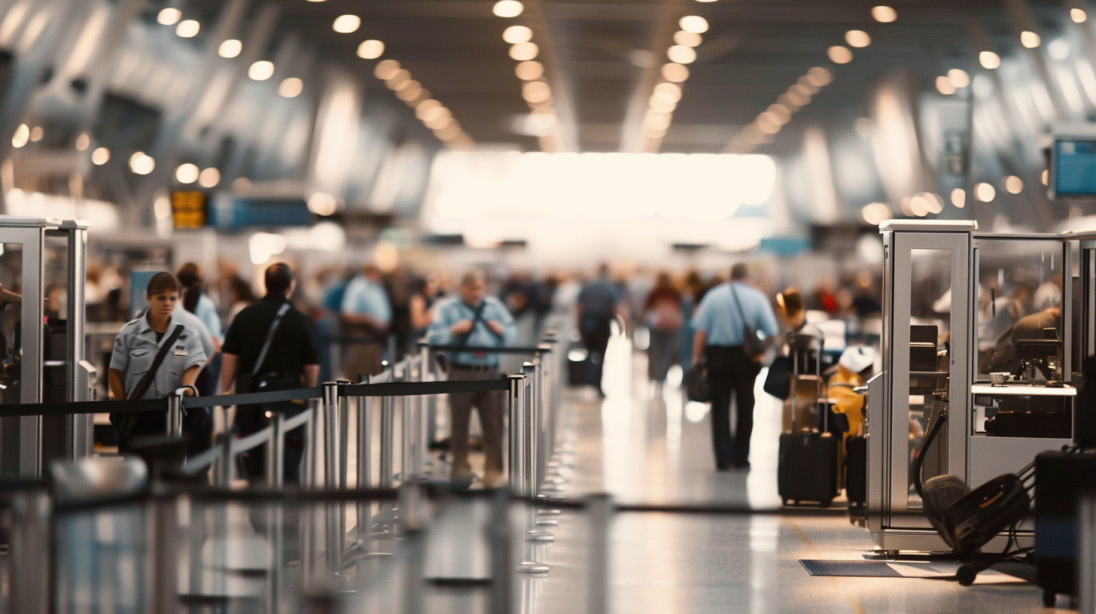G’day mate! If you’re wondering whether you can wear a baby carrier through airport security, you’re in the right place. Navigating airports with a little nipper in tow can be a challenge, but fear not – we’ve got your back. From security guidelines to savvy tips for smoother travel, we’ve got the lowdown on wearing a baby carrier through airport checkpoints. So, let’s dive in and get you prepped for a hassle-free journey down under!
Are you allowed to wear a baby carrier on a plane?
Sure, you can sport a baby sling through most airport checkpoints, but you might need to pass through additional screening. While onboard, the Federal Aviation Administration (FAA) suggests securing your bub in their own seat with a proper car seat rather than in a carrier for safety’s sake, mate. Keep in mind, each airline might have its own policy, so it’s wise to check in advance.
How do you pack a newborn on a plane?
When packing for a nipper on a plane, mate, you’ll want to secure the essentials first. That means loading your carry-on with spare outfits for bub in case of spills or mishaps. Chuck in additional bottles or liners if you’re bottle-feeding, and don’t skimp on the nappies and wipes; you’ll need a decent stash to cover a couple of days, just in case you cop any travel snags. Toss in an extra blankie too because you never know when you’ll need a fresh one, and a spare toy to keep the little one amused. If the tyke’s on solids, pack some purees, puffs, or appropriate munchies. And remember, while navigating the airport, a baby carrier can be a godsend. Strapping your joey in can keep your hands free and bub cosy, and you’ll often find you can waltz through security with your baby snugly strapped in, as long as there are no metal parts on the carrier. Just be ready for a possible additional pat-down. Keep it practical, keep it snug, and your sky-high adventure with the little one should be smooth sailing!
Can you take water through airport security for baby?
Absolutely, you can bring water for your bub through airport security. Though there’s a liquid limit for carry-ons, exemptions are typically made when it’s for your little one. Just separate it out when your gear’s going through the security screening, so they know it’s for the sprog. This way, you can keep your tiny tot hydrated and happy while you’re up in the skies! If you’re keen on more specifics, travelling with children guidelines are your best mate.
What is the 3 1 1 rule?
The 3-1-1 rule refers to airport security regulations that allow travellers to pack liquids, gels, and aerosols in containers no larger than 3.4 ounces or 100 milliliters. Each person is permitted to have these containers in a single, transparent, quart-sized bag to streamline the screening process as they pass through the checkpoints. Remember to have your liquids ready for inspection when you’re navigating through the terminal with your carry-on, to ensure a smooth transit to your gate.
What are the rules for infants at the airport?
When flying with infants, you can typically pass through airport security with a baby sling or harness. Security personnel may request a closer inspection while you move through the checkpoint, but you’re usually allowed to keep your little one close. Always check with your airline for any specific guidelines regarding travelling with young children to ensure a smooth journey.
What are the rules on baby bottles at the airport?
When travelling with an infant, you’re typically allowed to carry baby bottles through airport security. They may screen liquids such as expressed breast milk, formula, and sterilised water, along with baby food. Although there’s a restriction on liquids over 100ml in hand luggage, this limit doesn’t apply when you’re accompanied by your baby. However, if you’re flying solo, the standard liquid rules are in effect for these items. Be prepared for security personnel to inspect these containers to ensure they adhere to safe travel regulations. Remember also to pack any necessary items for your baby’s comfort during your flight within accessible reach.

What is the best way to carry a baby while traveling?
When jetting off with your bub, a baby carrier can be your best mate, allowing your hands to be free while keeping the little one snug against you. Through airport security, most times you can stride through with your bub in a sling or wrap, though they might require a quick pat-down. It’s a comfy way to keep your baby close in bustling terminals and boarding queues. Just check with the airline prior to arrival for any specific guidelines – some might ask for bub to be removed from the carrier during takeoff and landing for safety reasons. Either way, using a baby carrier can certainly be less of a hassle than navigating a pram through crowds and security lines.
Is it better to travel with a baby carrier or stroller?
Opting for a baby carrier can be quite handy through airport security checks since you can typically wear your bub through the metal detector, ensuring a smoother transit than a pram might allow. A carrier keeps bubs snug against you, freeing up your hands and making it easier to navigate the bustling terminals. However, a stroller can be beneficial for carrying additional bags or if you’re facing long layovers. Ultimately, the better choice depends on your travel needs and your little one’s comfort.
What is the hardest age to travel with a baby?
The toughest stage to travel with a bubs is typically between 9-12 months old. Once they start crawling and become quite active, they’re often too wriggly to stay put, making flights especially trying as your little one might be keen to explore beyond your lap and roam the cabin. Just remember, while navigating the airport, wearing bub in a carrier can streamline your journey through security, but check with your airline for specific guidelines on keeping your infant snug and secure while you traverse checkpoints. More info
Where is the best seat on a plane when traveling with a baby?
Opt for bulkhead seats or by the window when jetting off with a bub – these spots give you the most wiggle room and ease for the little one. A bulkhead seat is especially tops if you’ve got an infant; you can often secure a bassinet that clips onto the cabin wall. And being near the loos can be a real life-saver for quick nappy changes or toilet dashes. It’s smart to nab these seats early on though, as they’re popular with families and can get snatched up quick smart. Just ring up the airline after booking to sort this out. Travel smart, not hard, that’s the go!
At what age is it easier to travel with a baby?
Travelling with a bub can be surprisingly simpler when they’re between three and nine months old. This is when they’re not crawling about yet, which makes them easier to manage during a flight. Plus, once they hit the toddler years, beyond two or three, they’re often more adaptable and can cope better with the change in routine that comes with travelling. Whether you’re navigating the airport or settling onto the plane, using an infant sling or harness can streamline your experience, allowing you to have your hands free while keeping your little one snug and secure.
Conclusion
Wearing a baby carrier through airport security can be a game-changer when traveling with your little one. It not only keeps your hands free but can also streamline your experience as you navigate through the bustling terminals and security lines. While some additional screening might be required, the convenience of having your bub snug against you while you pass through the metal detector often outweighs the minor inconvenience. As with any travel, it’s always smart to check with your airline for their specific guidelines, but using a baby carrier can certainly make airport navigation smoother, allowing you to focus on enjoying your journey with your little one. So, strap in and get ready to make travel with your bub a breeze!


Stay connected